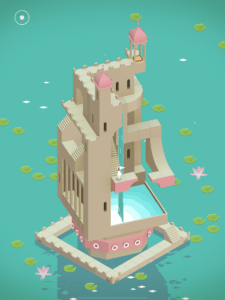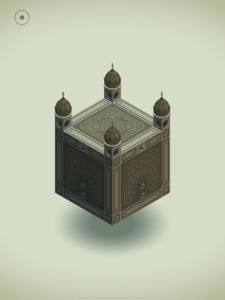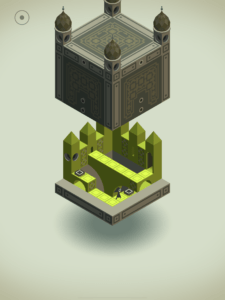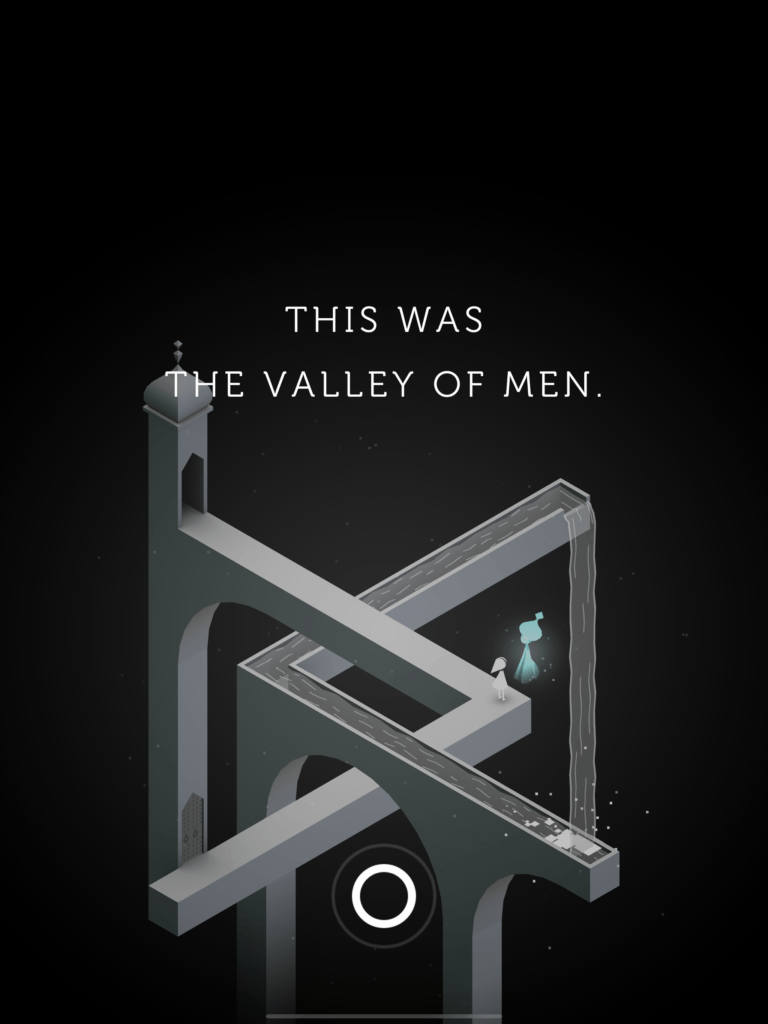Monument Valley
Creator: ustwo games
Platform: Google Play
Wow, this game was truly stunning. It used such a simple concept, impossible geometries formed from isometric view to create truly beautiful, increasingly engaging and mind-boggling puzzles. This game was a perfect balance of Challenge and Discovery. While there was a simple underlying story that connected all of the puzzles, Narrative was not a main driving force of fun in the game and I genuinely don’t think it was necessary since Challenge and Discovery were so strong. Each level was its own unique obstacle course that you had to maneuver Ida through to reach the desired door or platform. Discovery was incorporated from the very beginning. Before the title card even shows up, you are immediately placed into a short puzzle and learn your main ability, moving through the space, through trial and error on this simple course. From there, it’s all about discovering new capabilities as the puzzles become a increasingly difficult.


I think the most satisfying point of play for me was when I realized that the environment wasn’t static. At first I was placed into this course where it was seemingly impossible to reach the top platform and complete the level with the current layout of the environment. From there I realized that there were affordances on some of the geometry that allowed me to turn a handle, and part of the environment rotated. This is when I knew this game was truly special because the isometric environment allowed an impossible path to form that would be architecturally impossible in real life. It was really cool how that one mechanism made this game a real exercise in perspective. Suddenly I had to stop looking at the given environment in front of me but instead imagine how I could potentially alter or work within the environment to accomplish what I wanted.
I ended up playing a little over 10 Chapters, but almost gave up around Chapter 8 – the Box. This chapter was a test in my faith in the game. At first, Ida was not even visible on the screen, which threw me for a loop because up until then everything I was able to do was through Ida.I eventually figured out how to reveal Ida but from there it got even harder. This level was incredibly interesting because it had multiple hidden environments in the box that connected through doors, so you had to coordinate the action happening in multiple hidden environments at once. At first everything was going well, I was interacting with the right parts of the puzzle, things were shifting in useful ways, and the box was lighting up indicating I was getting close to solving the level. Then I reached a point where all the doors locked and Ida was trapped in a part of the box where there was nothing for her to interact with. I was stuck. Since this level required so much coordination, I thought I had just done something out of order so I restarted the level, but quickly reached the same roadblock. This moment reminded me a lot of the reading the week about designing games and the example of bad “restore” puzzles where players get completely stuck after making a wrong decision and have to restart. For a little bit when I could not find a way to move forward on the level, I thought I had found an example of bad game design within the game. Then I had to remind myself that this game was highly reviewed, so it’s highly unlikely that the game designers would create an irreversible trap. It turns out that this was another case of shifting my perspective and I had use one of the walking crows to unlock the rest of the box. However, if this wasn’t a game that I knew was highly rated, I might have grown frustrated and given up there. It brings up interesting questions about how puzzle games rely on player’s trusting that the designer won’t trap or trick them. I had implicit trust that this game was well designed because it was highly recommended by the teaching team, but in our P2 games we might need to do more to safeguard against player trust being broken when playing our puzzles.






